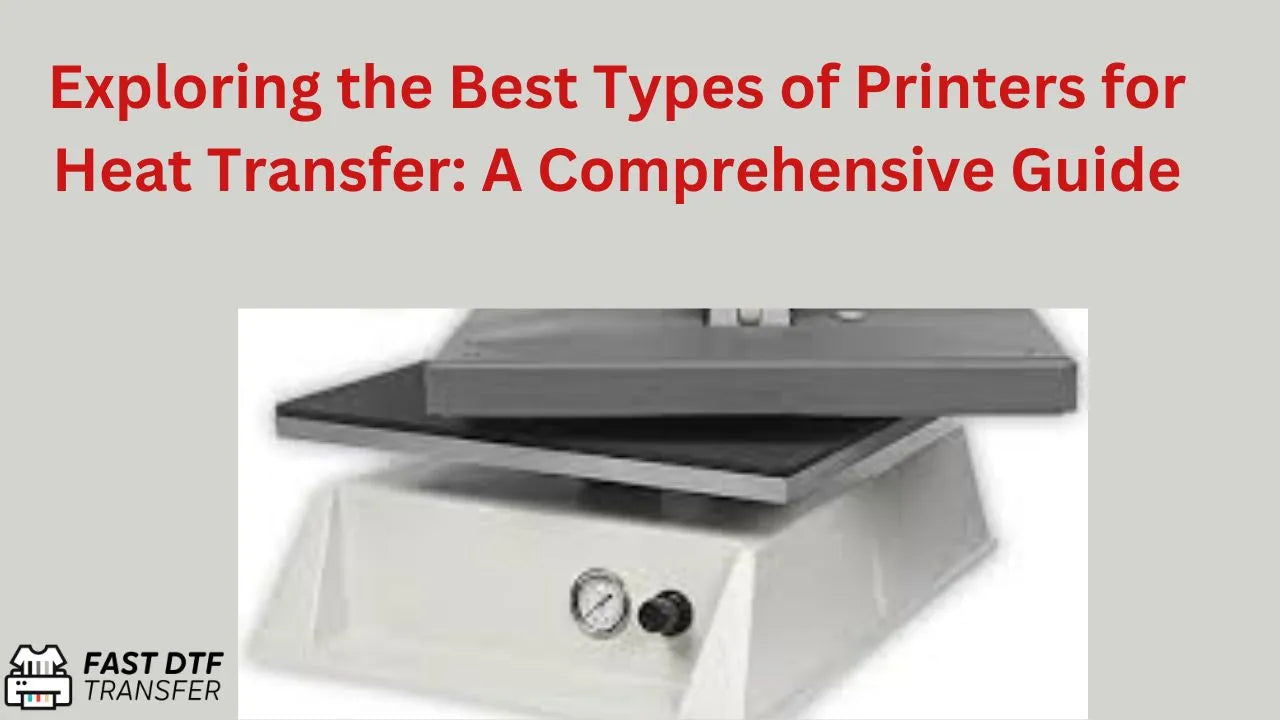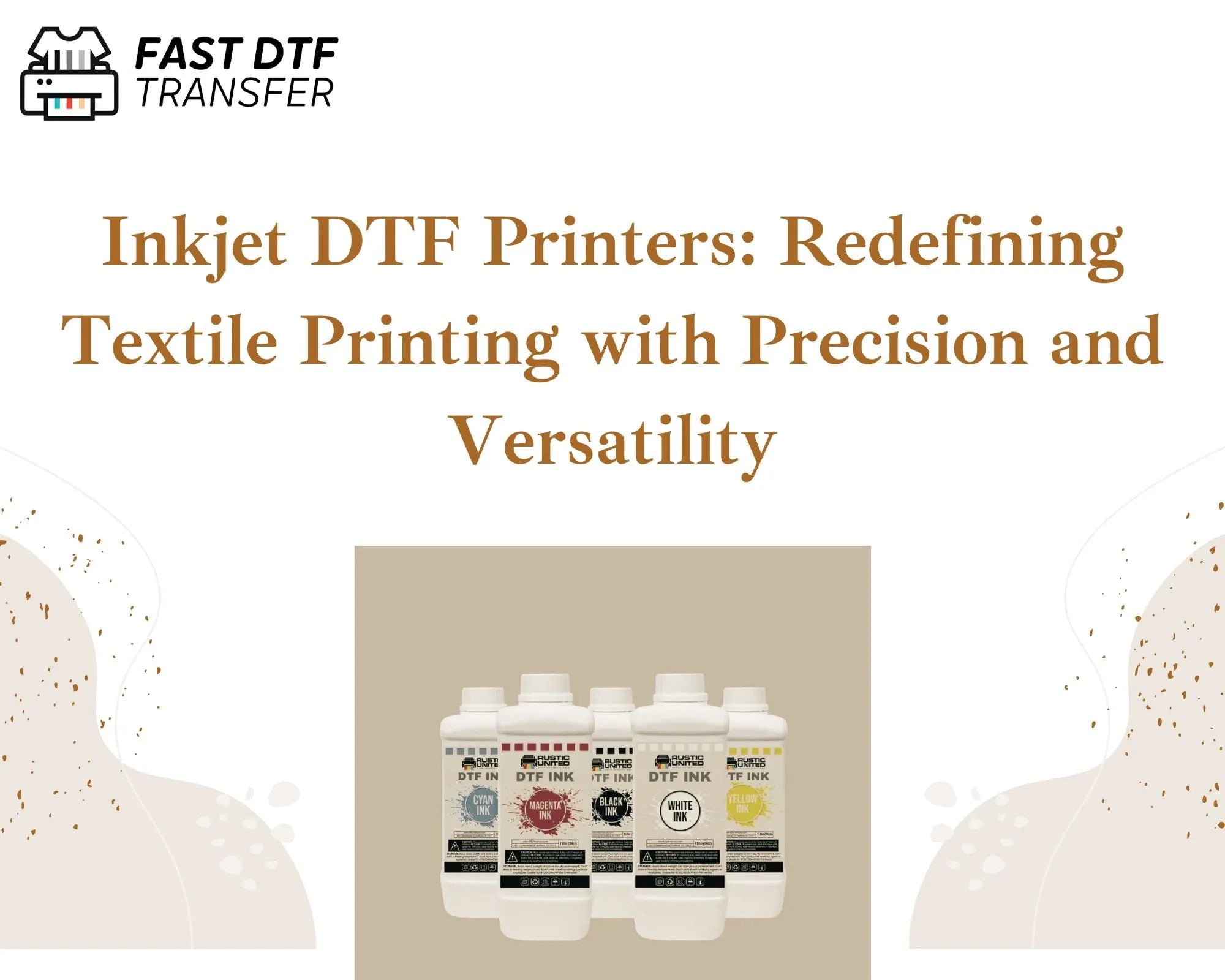
Best Types of Printers for Heat Transfer

Best Heat Transfer Printers for Custom Apparel and More
Heat transfer printing is a popular method for creating custom designs on various surfaces, especially apparel. Whether you're printing on t-shirts, hats, or other textiles, choosing the right heat transfer printer is crucial for producing high-quality designs with great durability. In this blog, we’ll take a closer look at heat transfer printers, the different types available, and which ones are best for your needs.
What is Heat Transfer Printing?
Heat transfer printing involves transferring a design onto fabric or other materials using heat and pressure. The process typically requires a heat transfer printer, which prints the design onto a special transfer paper or film, and a heat press machine, which applies heat to transfer the design onto the chosen material.
This printing method is favored for its ability to produce vibrant, full-color designs and the flexibility to print on-demand or in small runs. It’s commonly used for custom apparel, promotional products, and other personalized items.
Types of Heat Transfer Printers
There are several types of heat transfer printers available, each offering unique features and benefits. Here are the most common types:
1. Direct-to-Garment (DTG) Printers
DTG printers are a popular choice for heat transfer printing, especially when printing custom designs directly onto t-shirts and other apparel. DTG printing uses inkjet technology to apply ink directly onto fabric, offering vibrant, high-quality prints with fine details.
Advantages of DTG printers:
- Great for full-color designs with fine details
- No need for additional transfer paper
- Ideal for small batches and on-demand printing
However, DTG printers can be expensive, and they typically require pre-treatment on garments to ensure the best results, which can add to the process time.
2. Sublimation Printers
Sublimation printing is another popular method for heat transfer. This process involves using special sublimation ink that turns into gas when heated, allowing it to bond directly to the fabric. It’s perfect for printing on polyester or other synthetic fabrics, creating vibrant, long-lasting designs.
Advantages of sublimation printers:
- Ideal for full-color, detailed designs
- The print becomes part of the fabric, making it durable and resistant to fading
- Great for printing on white or light-colored materials
However, sublimation printers are limited to polyester and polyester-coated materials, so they are not suitable for cotton or dark-colored fabrics.
3. Vinyl Cutters
Vinyl cutting is a different method for heat transfer printing. This method involves cutting designs from heat transfer vinyl (HTV) and then applying them to fabric using a heat press. While not a traditional printer, a vinyl cutter can be paired with a heat press to create simple designs, text, and logos.
Advantages of vinyl cutters:
- Great for simple, bold designs and logos
- Works on a variety of fabrics, including cotton and polyester
- No need for ink or toner
However, it’s not ideal for full-color designs or intricate graphics, as vinyl cutting is limited to single-color designs.
4. Direct-to-Film (DTF) Printers
DTF printers are a newer technology that’s gaining popularity in the heat transfer industry. This process involves printing designs onto a transfer film, which is then applied to the fabric using a heat press. DTF printers offer flexibility for printing on a variety of fabrics, including cotton, polyester, and even mixed fabrics.
Advantages of DTF printers:
- Works on a wide range of fabrics
- Produces vibrant, durable prints
- Suitable for small batches and on-demand printing
However, DTF printing can require specialized equipment, such as adhesive powder and curing stations, which adds to the initial investment.
5. Laser Printers for Heat Transfers
Laser printers use toner-based technology to print designs onto special transfer paper. The printed design is then transferred to fabric using a heat press. Laser printers are popular for printing on light-colored fabrics and offer precise, sharp designs.
Advantages of laser printers:
- Ideal for small runs and one-off designs
- Great for printing on light-colored fabrics
- No need for additional inks or materials
However, laser printing is limited when it comes to full-color designs, and it may not be as durable as sublimation or DTG printing for dark fabrics.
Choosing the Best Heat Transfer Printer
When selecting a heat transfer printer, several factors should influence your decision, including:
- Type of material: Consider the types of fabrics you plan to print on. Sublimation printers are ideal for polyester, while DTG printers are great for cotton and dark fabrics.
- Design complexity: If you plan to print detailed or full-color designs, a DTG printer or sublimation printer may be best. For simple logos and text, a vinyl cutter may suffice.
- Production volume: For high-volume production, DTG printers or DTF printers might be more efficient. For small batches, vinyl cutters or laser printers can be more cost-effective.
- Budget: Consider your budget for the equipment and ongoing costs, such as ink, transfer paper, and maintenance.
Conclusion: Investing in the Right Heat Transfer Printer
Choosing the right heat transfer printer depends on the specific needs of your business and the type of products you plan to create. DTG printers are excellent for high-quality, detailed designs, while sublimation printers are ideal for vibrant, full-color prints on polyester fabrics. DTF printers offer versatility for printing on various materials, and vinyl cutters are perfect for simple, bold designs.

